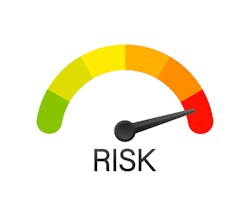The impact of climate change, residential development, government forest management activities, and aging infrastructure have all combined to increase the risk of wildland fires. These factors have appeared to manifest in more frequent and more damaging fires, some of whose origins have been traced to overhead power transmission lines. To combat this growing concern, electric utilities are increasing efforts and adopting new approaches to mitigate fire ignition risks. This interactive panel discussion will describe an innovative, quantitative risk-based framework recently incorporated by Pacific Gas and Electric (PG&E) for better assessing the performance of individual overhead power transmission assets during high wind events. It is currently being applied to assets whose failure could lead to wildfire ignition. The framework utilizes the same underlying health data as conventional approaches, such as visual inspections and review of past outages, but incorporates them into a state-of-the-art, quantitative risk mitigation framework rather than a conventional risk matrix. The framework provides quantitative health measures in a form that can be directly coupled with consequence estimates to enable risk-informed operational assessment and asset management strategies. The framework can be applied to both real-time decisions regarding forecast (scenario) windstorms, as well as to long-term asset management strategy based on local wind hazards derived from past measurements.
Session attendees will learn:
- About an innovative, quantitative risk-based framework recently incorporated by Pacific Gas and Electric (PG&E) for better assessing the performance of individual overhead power transmission assets during high wind events.
- How the framework utilizes the same underlying health data as conventional approaches, such as visual inspections and review of past outages, but incorporates them into a state-of-the-art, quantitative risk mitigation framework rather than a conventional risk matrix.
- How the measures provided by the framework can be directly coupled with consequence estimates to enable risk-informed operational assessment and asset management strategies.
Speaker
Morgan Griffith, Senior Managing Engineer, Buildings & Structures Practice, Exponent
Morgan Griffith is a Senior Managing Engineer in the Buildings & Structures practice at Exponent. Mr. Griffith specializes in the areas of non-linear structural analysis, performance-based design and assessment of structures, earthquake engineering, and soil-structure interaction. Mr. Griffith has performed analyses of structures under extreme loading conditions including those imposed by seismic, wind, flood and snow loads. Mr. Griffith has assessed damage to structures due to earthquake, wind, fire, ground settlement and material degradation such as wood decay and steel corrosion. He has experience in the design and analysis of wood, steel, and concrete structures as well as in geotechnical investigations for offshore foundation design.
This webinar was sponsored by Exponent as part of the T&D World Wildfire & Risk Mitigation Conference in December 2020.
